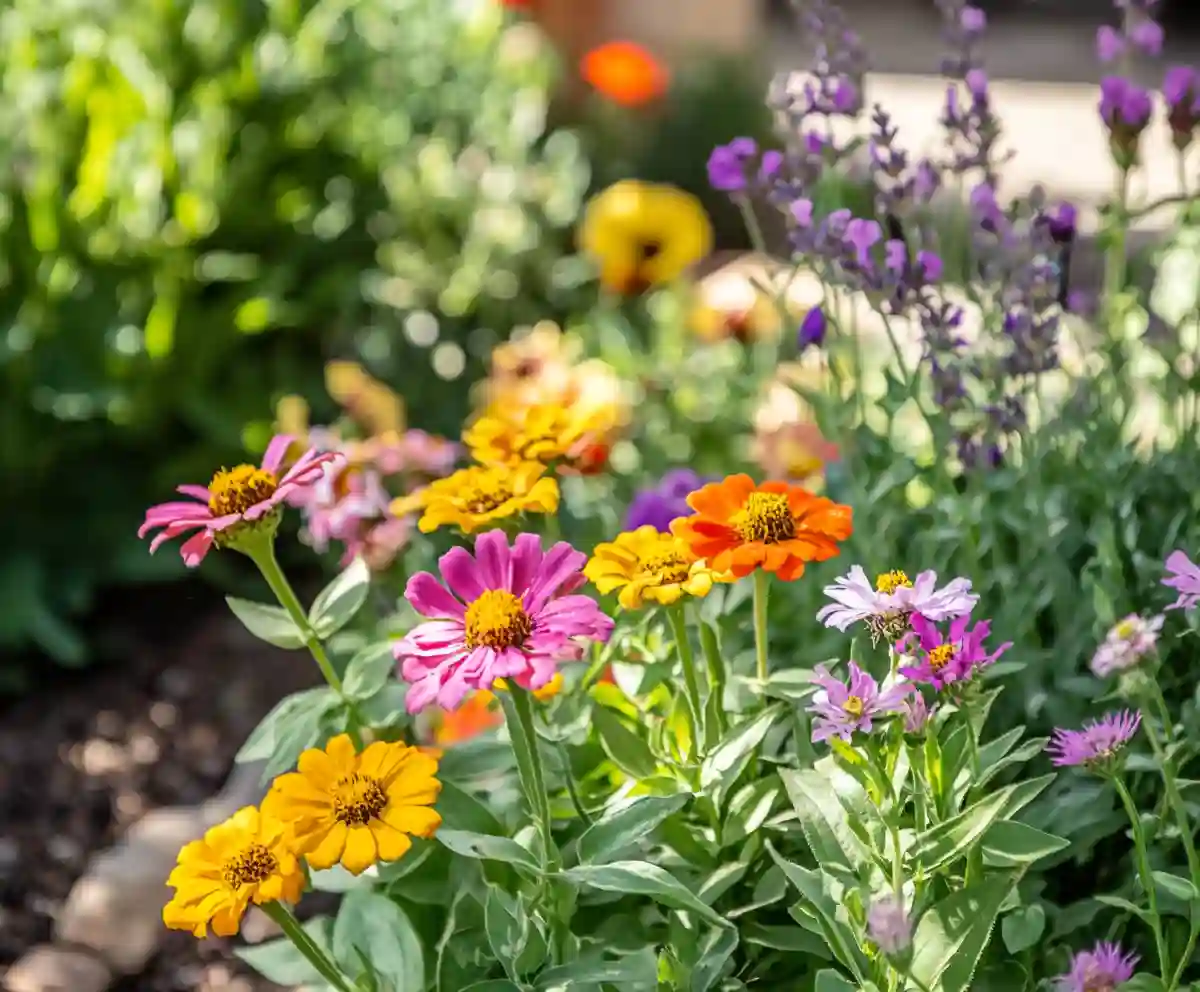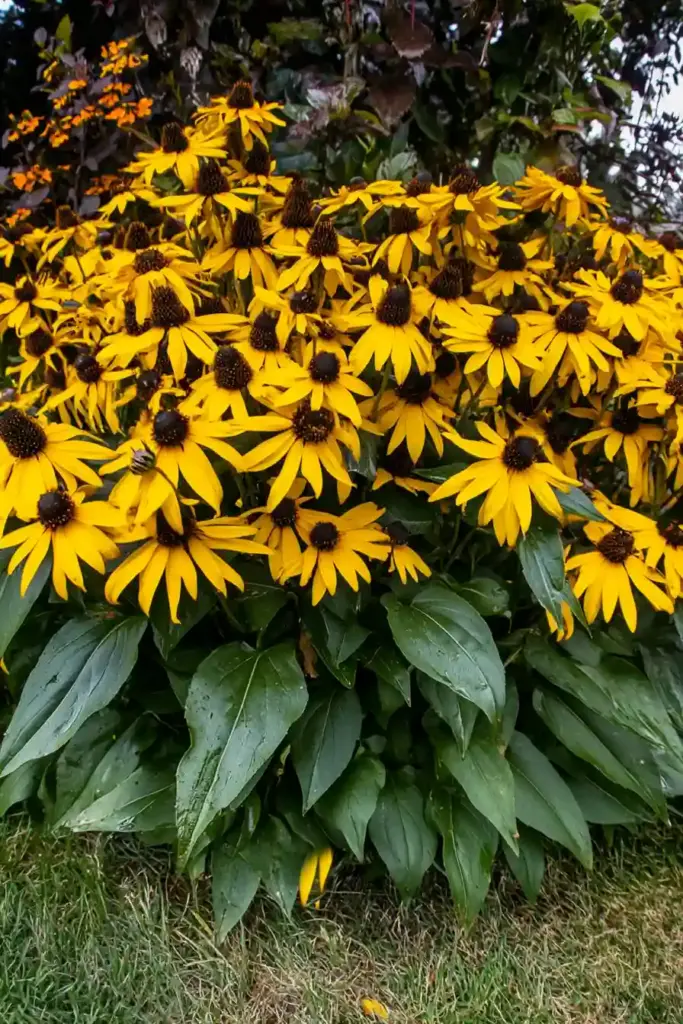Creating a vibrant, thriving garden doesn’t have to mean endless watering or struggling through summer droughts. With the right selection of drought-tolerant plants, you can cultivate a stunning landscape that’s as low-maintenance as it is water-wise. Whether you live in a desert climate or just want to conserve water, there are hardy options—from colorful flowers to structural succulents—that suit every space and style.
In this guide, we’ll explore 31 of the best drought-resistant options, thoughtfully grouped into categories like perennials, annuals, herbs, succulents, vines, and ornamental grasses. You’ll discover which ones work best for your garden and how to keep them happy with minimal effort. Ready to transform your dry landscape into a blooming paradise? Let’s dive in.
Table of Contents
🌼 Drought-Tolerant Perennials
Perennials are a gardener’s dream—they come back year after year with minimal fuss. Even better, these hardy perennials can survive long dry spells without constant watering, making them perfect for xeriscaping or low-water gardens.
1. Black-Eyed Susan (Rudbeckia hirta)
Bright, cheerful, and low-maintenance, Black-Eyed Susans are classic drought-tolerant plants that light up gardens with their golden-yellow petals and dark centers. Once established, they thrive in full sun and tolerate poor soil conditions with ease. Bonus: they attract pollinators like bees and butterflies.
2. Yarrow (Achillea millefolium)
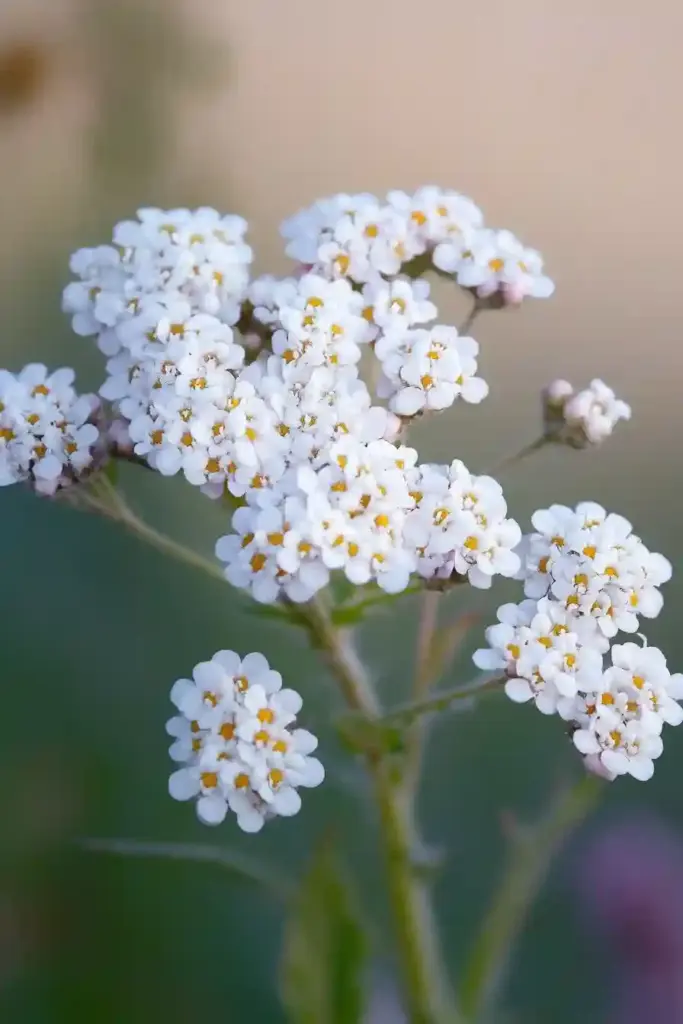
With its fern-like foliage and flat clusters of flowers in white, yellow, or pink, yarrow is as tough as it is pretty. It resists both drought and deer, making it ideal for dry landscapes and wildlife-friendly gardens.
3. Blanket Flower (Gaillardia)
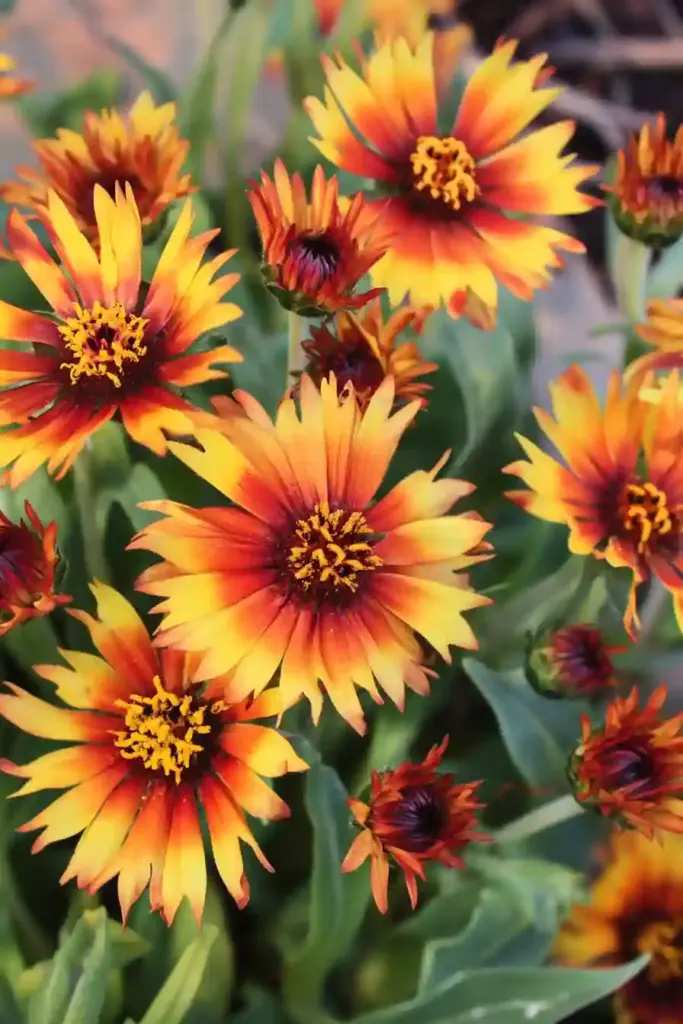
These vivid red-and-yellow blooms add a splash of warmth and color from late spring through fall. Native to North America, Blanket Flowers love the sun and don’t mind sandy or rocky soil. They reseed freely, making them a self-sustaining addition to any garden.
4. Rose Campion (Lychnis coronaria)
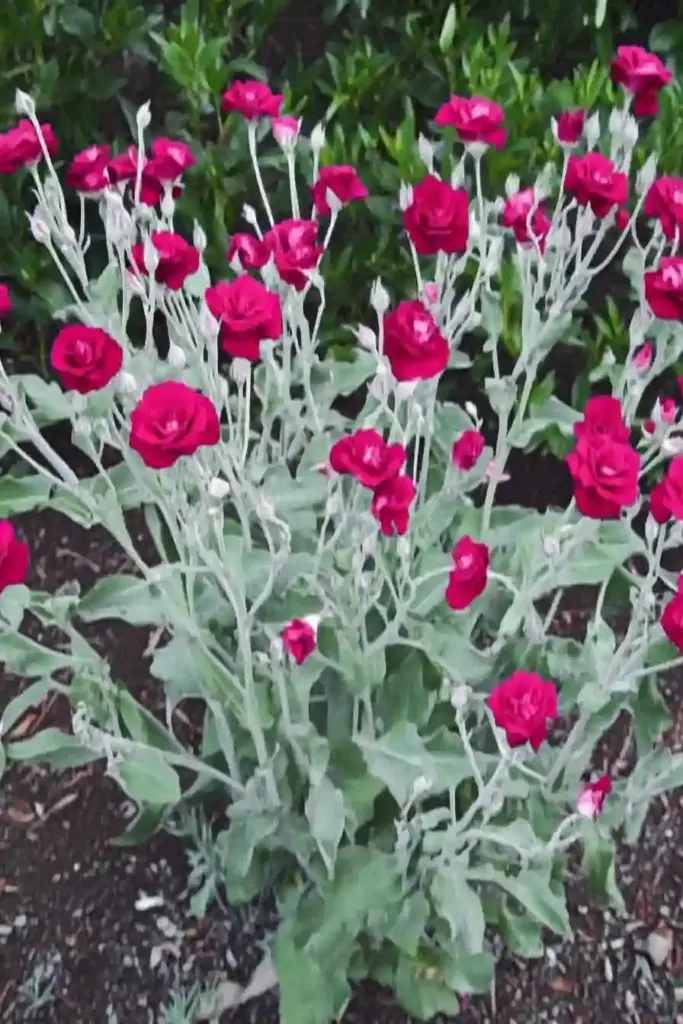
This silver-leafed perennial boasts vibrant magenta or soft white flowers that contrast beautifully with its fuzzy foliage. It’s drought-hardy, thrives in poor soil, and adds a touch of old-fashioned charm to garden borders.
5. Oleander (Nerium oleander)

A hardy Mediterranean shrub, oleander grows dense and lush with minimal water. It blooms profusely in pink, red, or white and handles both heat and drought with ease. (Note: Oleander is toxic to pets and humans if ingested—plant with care.)
6. Verbena (Verbena spp.)

Verbena is a sprawling, sun-loving plant that blooms endlessly in dry conditions. Available in many colors, it’s perfect for borders, containers, and hanging baskets. With minimal water, it keeps on blooming through the hottest months.
🌸 Drought-Tolerant Annuals
Annuals bring a burst of seasonal color to any garden—and the good news is, some of the most vibrant options are incredibly drought-tolerant. These fast-growers are perfect for filling in bare spots, adding container interest, or lining walkways with color that lasts all summer.
1. Zinnia (Zinnia elegans)
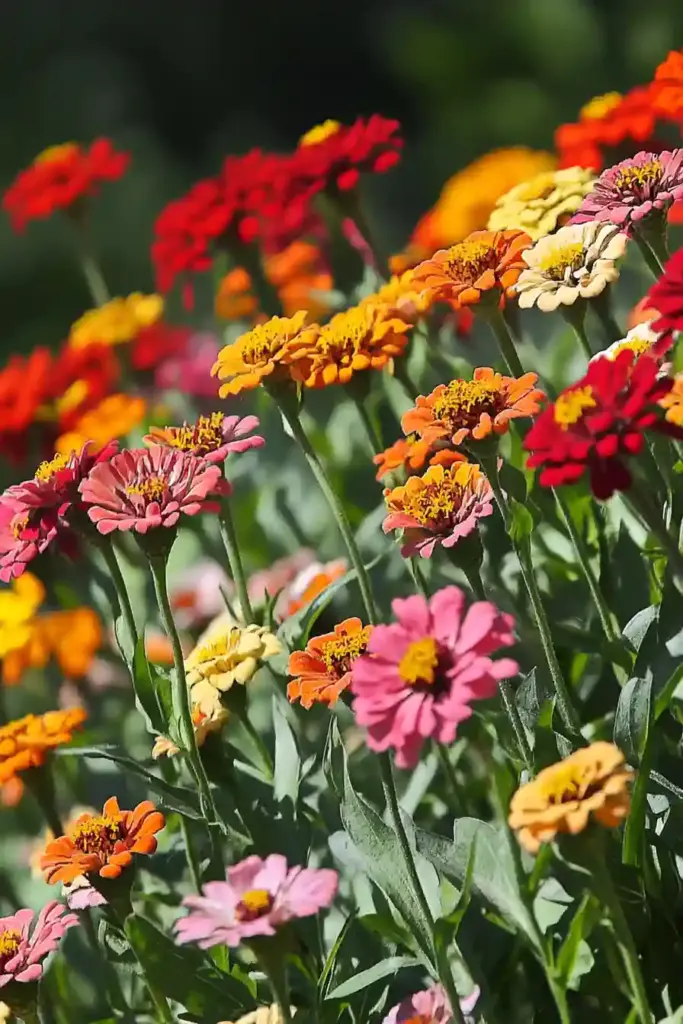
Zinnias are sun-loving superstars that bloom in vivid shades of red, orange, pink, and purple. Native to Mexico, these flowers thrive in heat and tolerate dry spells with ease. They’re perfect for pollinator gardens and bloom until frost.
2. California Poppy (Eschscholzia californica)
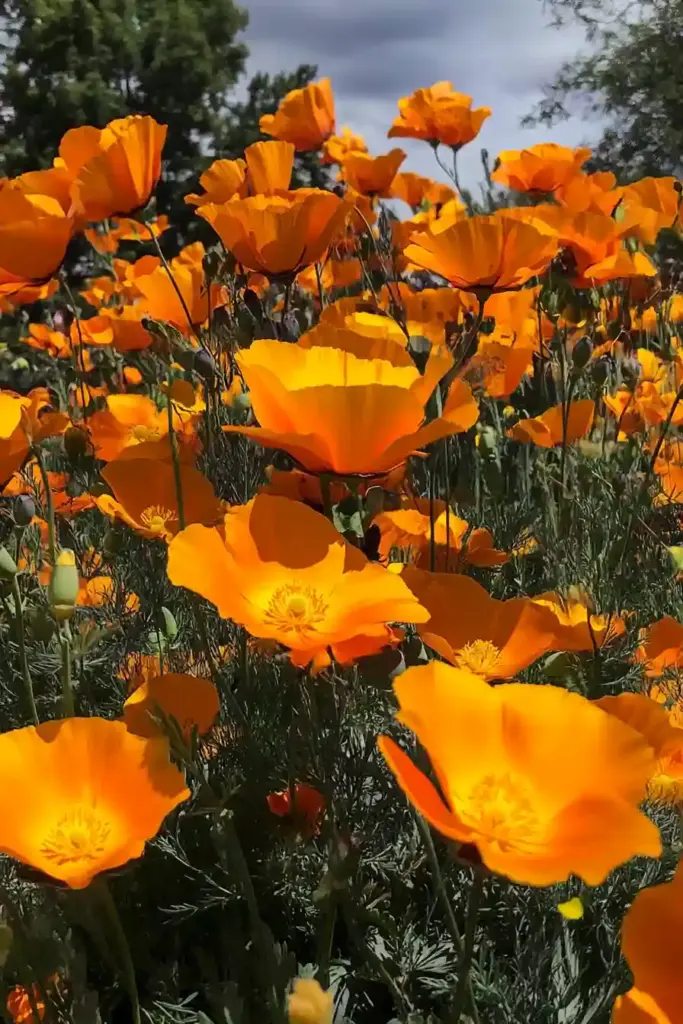
Known for its silky orange blooms, the California Poppy is more than just a state symbol—it’s a tough, self-seeding annual that flourishes in poor, dry soil. It opens its petals during the day and folds them at night or in cloudy weather.
3. Marigold (Tagetes spp.)
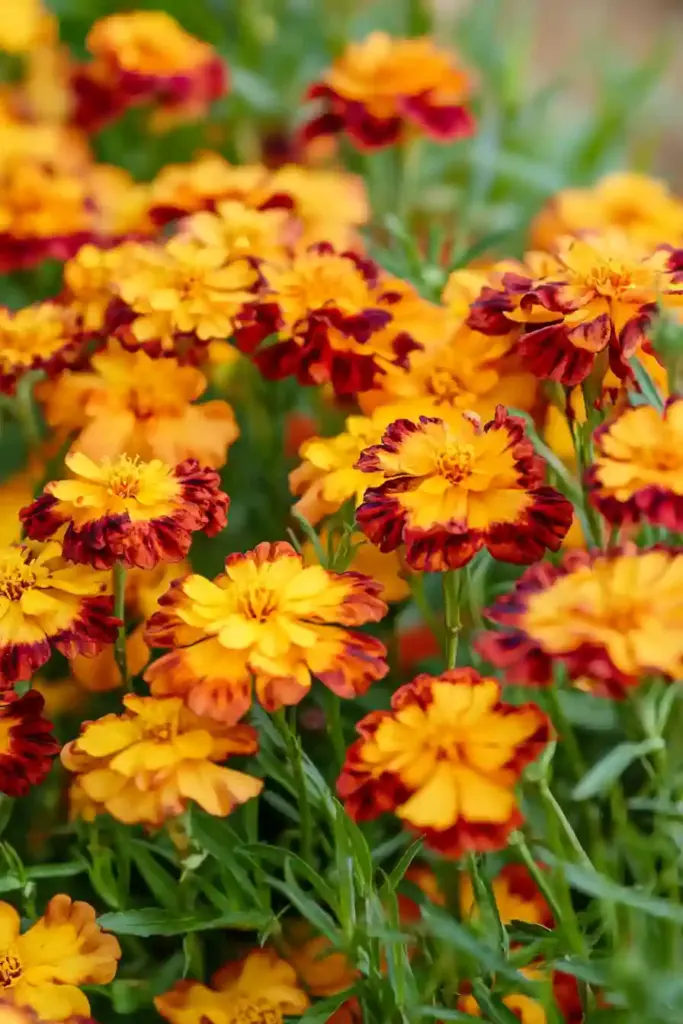
A garden favorite for generations, marigolds are drought-tolerant and pest-repellent, making them ideal companions for vegetables or flower beds. Their warm hues range from golden yellow to deep rust and bloom through the hottest months.
4. Portulaca (Portulaca grandiflora)
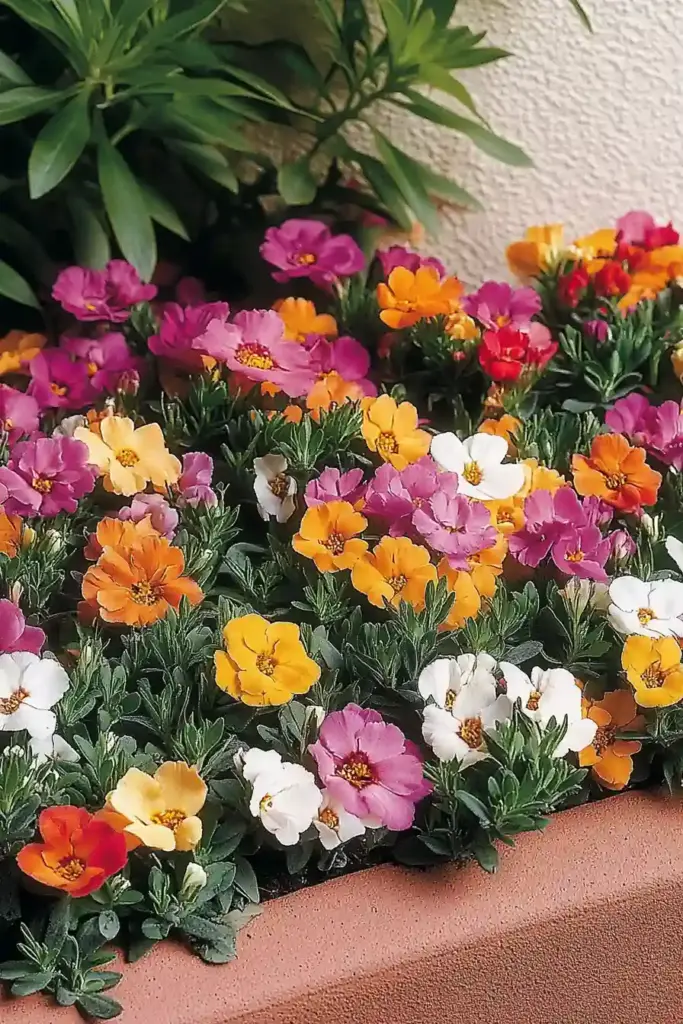
Also known as moss rose, portulaca is a low-growing annual with succulent-like leaves and vibrant, rose-like flowers. It thrives in sandy, well-draining soil and prefers full sun. Ideal for rock gardens and hanging baskets.
5. Wallflower (Erysimum spp.)
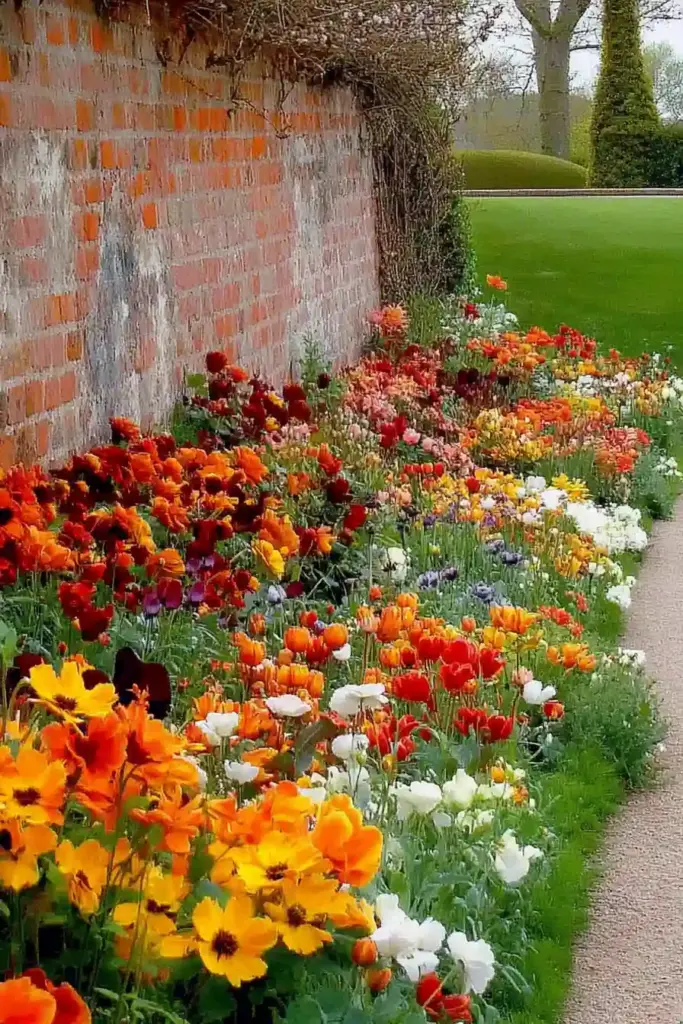
Despite the name, these annuals love the spotlight in dry gardens. Wallflowers bloom in a range of colors—purple, orange, yellow—and tolerate dry, rocky soil. They often thrive where other flowers struggle, especially in urban or coastal environments.
🌵 Drought-Tolerant Cacti
Cacti are iconic symbols of dry, desert climates for a reason—they store water efficiently and flourish with minimal care. These low-maintenance plants add architectural interest and are ideal for xeriscaping, rock gardens, or containers in full sun.
1. Saguaro (Carnegiea gigantea)
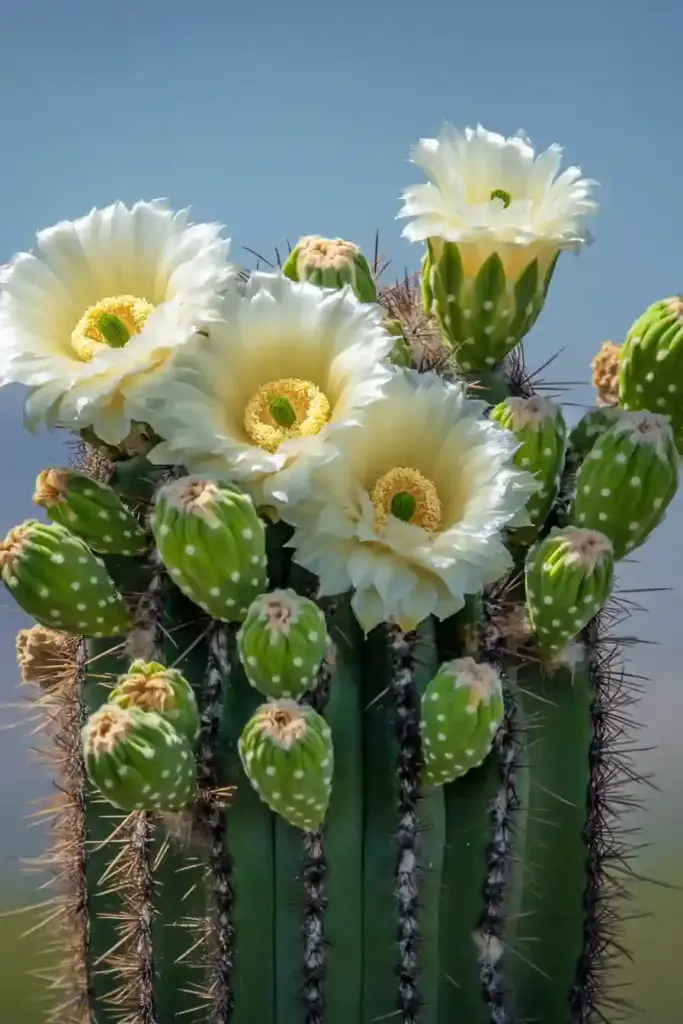
The majestic saguaro is a desert giant, reaching heights up to 40 feet. Native to the Sonoran Desert, it grows slowly but makes a bold statement. With large white flowers that bloom in summer and a dramatic silhouette, this cactus is a living sculpture.
2. Barrel Cactus (Ferocactus spp.)

Recognizable by its rounded shape and pronounced ribs, the barrel cactus is not only heat-tolerant but also resistant to grazing animals thanks to its sharp spines. It thrives in sandy, well-drained soil and needs very little water to survive.
3. Prickly Pear (Opuntia spp.)
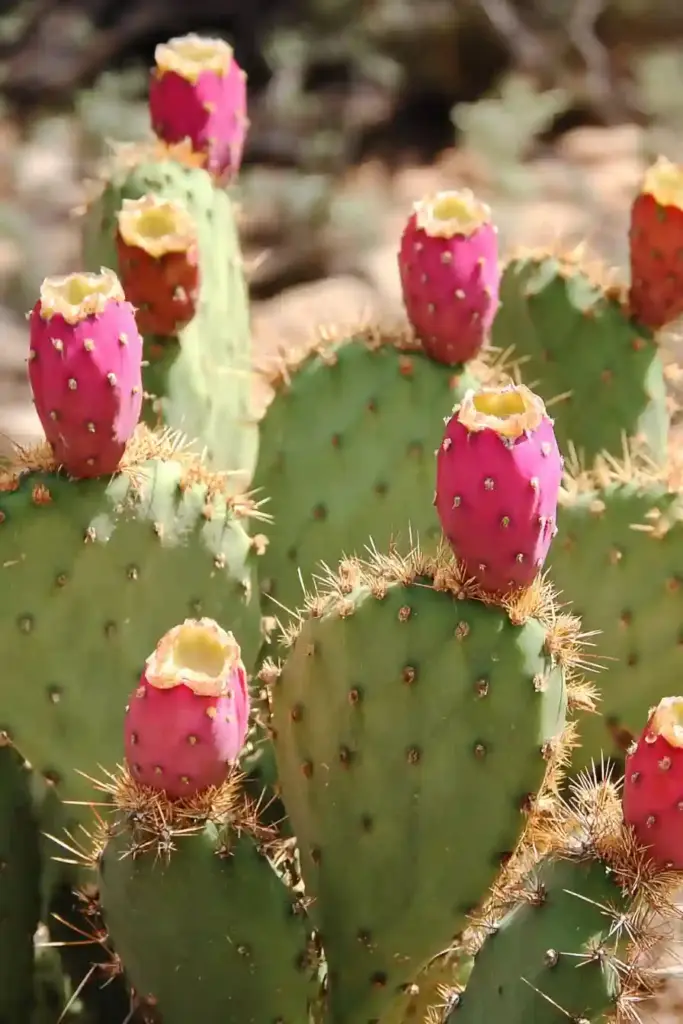
This edible cactus is popular both for its paddle-shaped pads and colorful fruit. Found across the Americas, prickly pear is drought-resistant and visually striking. The flowers range from yellow to red and attract bees and butterflies.
🪴 Drought-Tolerant Succulents
Succulents are the poster children for water-wise gardening. These fleshy-leaved wonders store moisture in their leaves, stems, or roots, making them ideal for dry climates and busy gardeners alike. With endless shapes, colors, and textures, they add character to beds, borders, and containers.
1. Sedum (Sedum spp.)
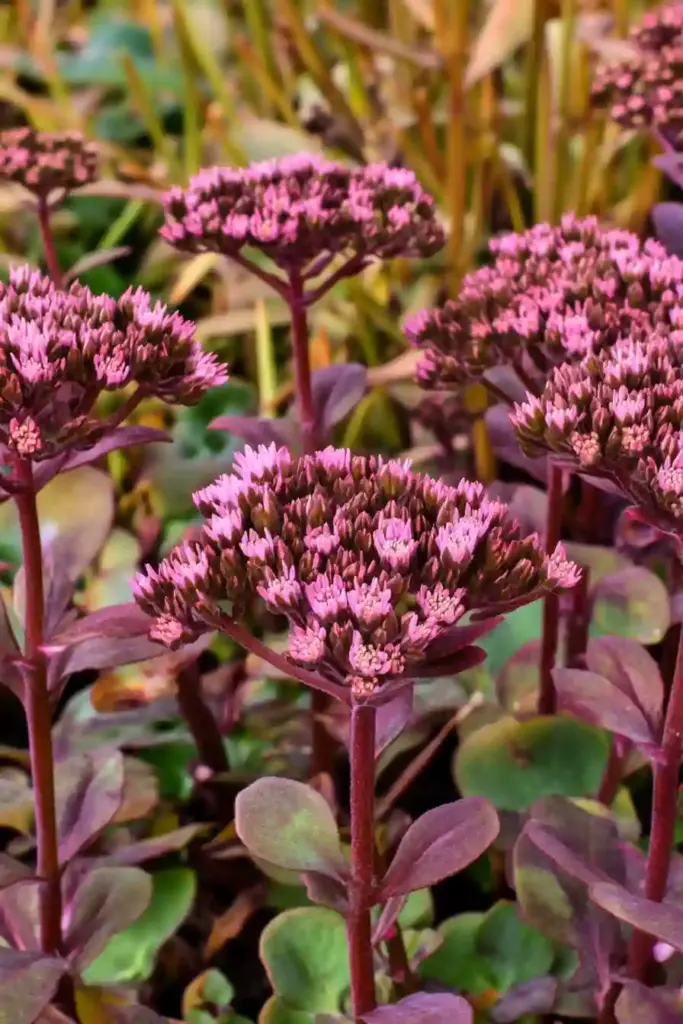
Also known as stonecrop, sedum is a versatile ground cover or container filler that thrives in poor, dry soil. Its star-shaped blooms appear in late summer, ranging from white to pink or yellow. Sedum spreads quickly and requires virtually no upkeep.
2. Echeveria (Echeveria spp.)
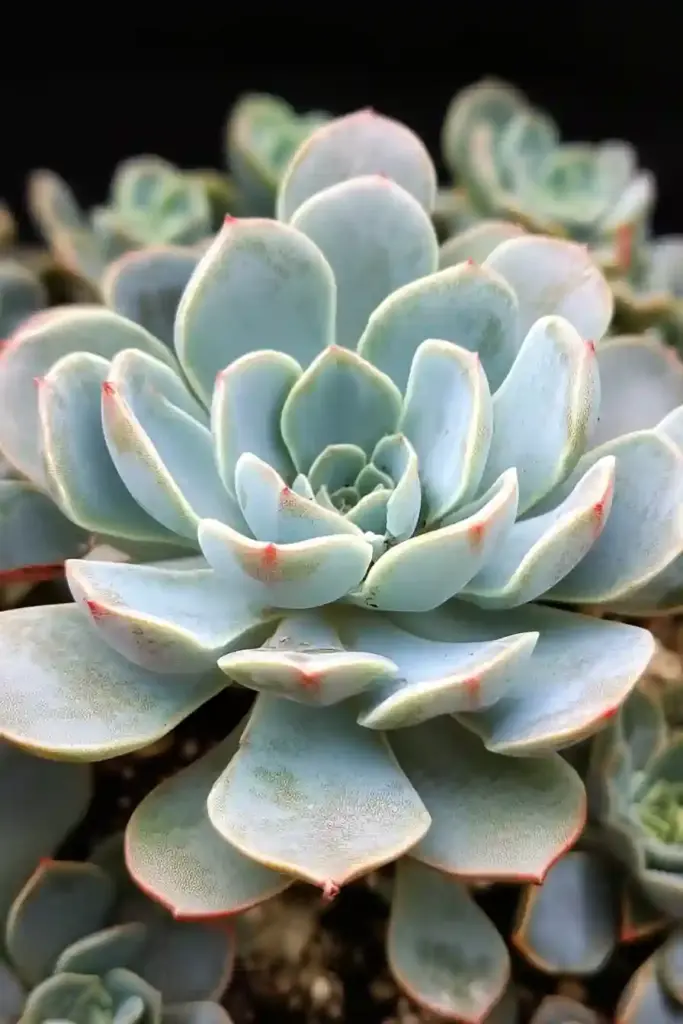
Echeverias form gorgeous rosettes in shades from soft green to deep purple. Their sculptural look makes them favorites for decorative planters. While they prefer full sun, they can tolerate light shade and survive with very little water once established.
3. Aloe (Aloe vera)

Famous for its healing properties, aloe is more than just a skincare staple. It’s a striking succulent with thick, serrated leaves that thrive in dry soil and bright light. Keep it in pots or borders where drainage is excellent.
4. Agave (Agave spp.)
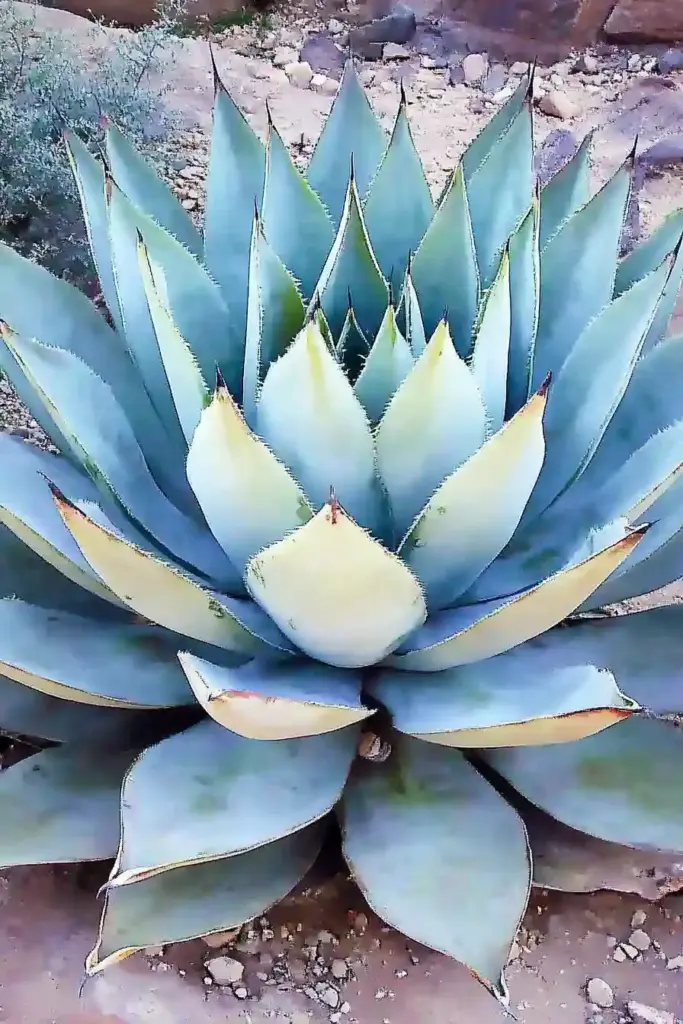
Agave plants are bold and dramatic, with large, spiny leaves and a striking symmetry. Native to Mexico, they’re well-suited for hot, dry areas. While most agaves flower just once before dying, they live for many years and require almost no watering.
🌿 Drought-Tolerant Herbs
Herbs are not only useful in the kitchen—they’re also incredibly resilient. Many originated in arid Mediterranean climates, which makes them naturally drought-tolerant. These herbs thrive in poor, dry soil and bring fragrance, flavor, and pollinators to your garden.
1. Rosemary (Rosmarinus officinalis)
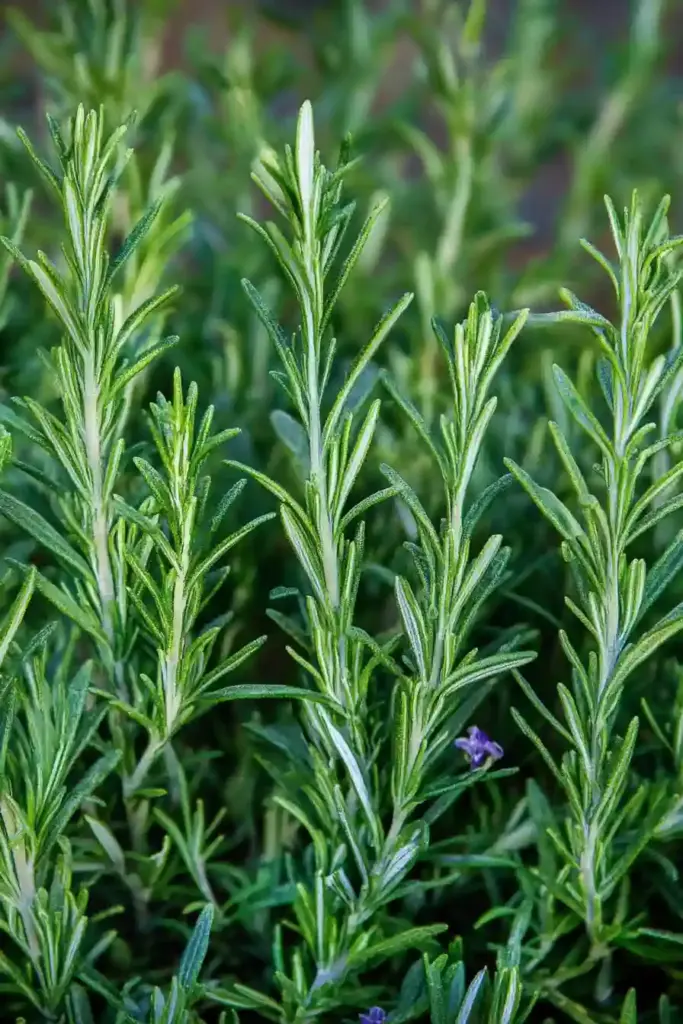
Rosemary is a woody perennial that loves the sun and doesn’t flinch during dry spells. Its needle-like leaves are packed with fragrance, and its tiny blue flowers attract bees. It works great as a low hedge, in containers, or even shaped into topiaries.
2. Oregano (Origanum vulgare)
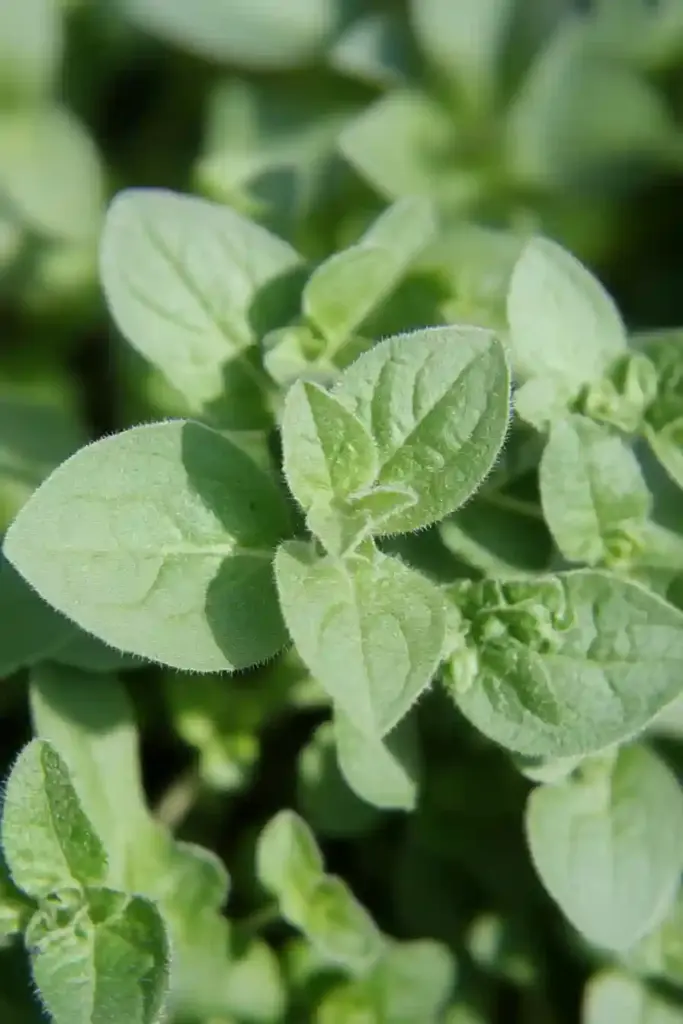
Oregano is a hardy herb with robust flavor and minimal needs. Once established, it prefers dry soil and full sun. With pinkish-purple flowers in late summer, oregano is both ornamental and edible—perfect for Mediterranean-style gardens.
3. Sage (Salvia officinalis)
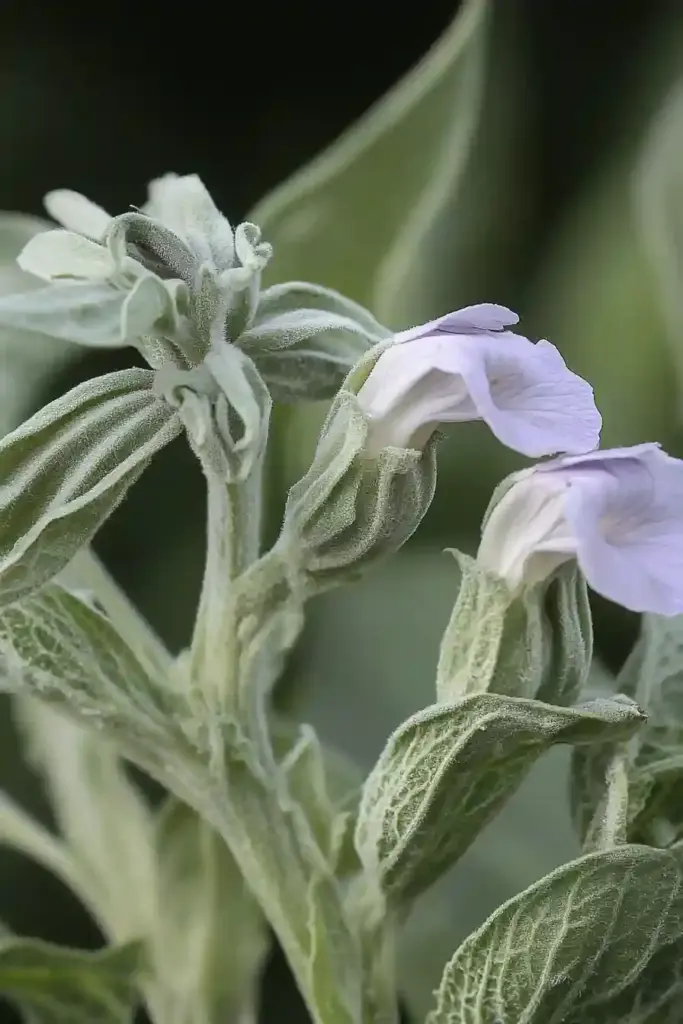
Sage is a favorite for both cooking and drought-tolerant landscaping. It features soft, silvery leaves and blue-to-purple flowers that bloom in summer. It thrives in well-drained soil and full sun and also adds lovely texture to herb borders.
4. Lavender (Lavandula spp.)
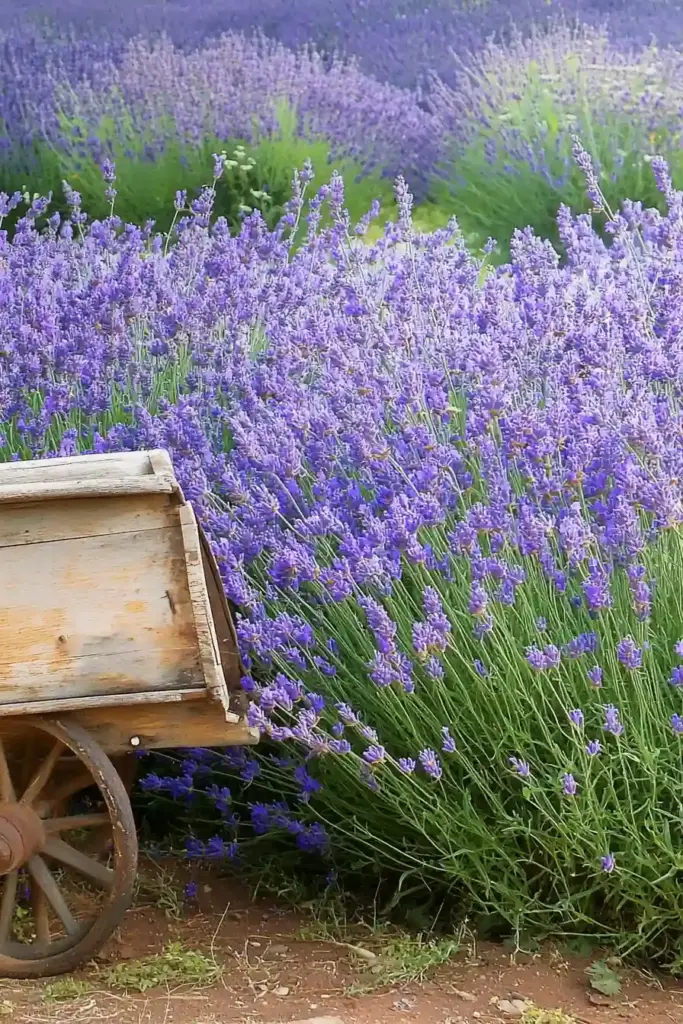
Beloved for its scent and soft purple blooms, lavender is a drought-hardy superstar. It thrives in dry, sunny spots and poor soil. Use it as a fragrant hedge, a pollinator magnet, or a charming border plant. Prune after flowering to keep it tidy and blooming.
🌾 Drought-Tolerant Ornamental Grasses
Ornamental grasses bring movement, texture, and a naturalistic feel to landscapes. Many varieties are extremely drought-resistant and thrive with minimal care, making them perfect for water-wise gardening. They look great year-round and pair well with perennials and succulents.
1. Feather Grass (Stipa tenuissima / Nassella tenuissima)
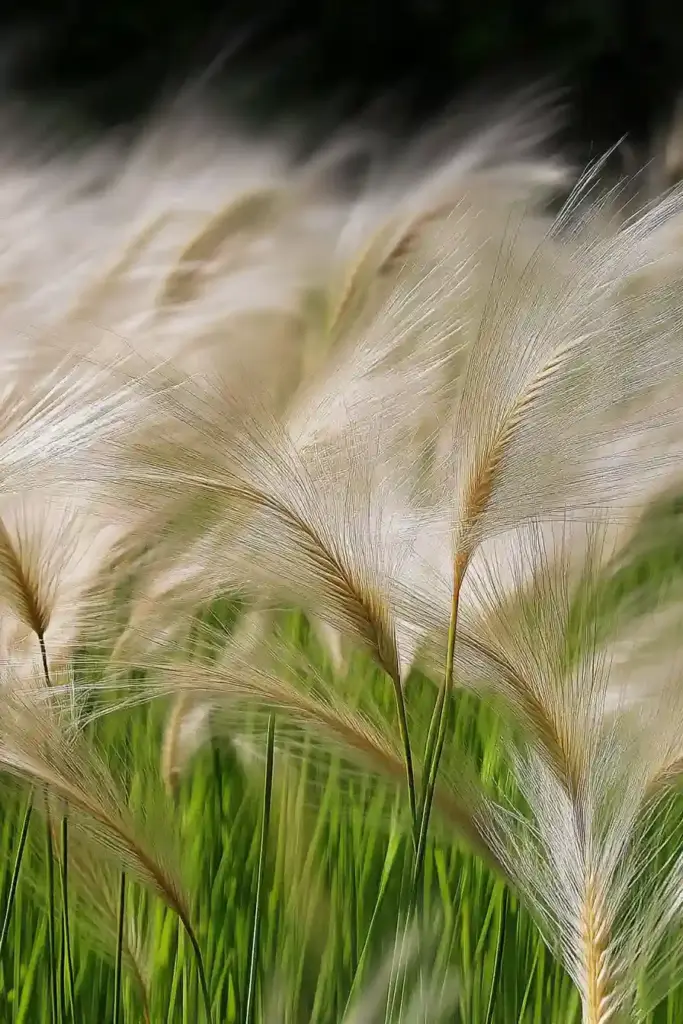
Also called Mexican feather grass, this fine-textured beauty sways in the breeze and thrives in full sun. Its wispy, hair-like foliage gives it a delicate appearance, but don’t let that fool you—it’s incredibly tough and tolerates dry, sandy soils with ease.
2. Blue Grama Grass (Bouteloua gracilis)
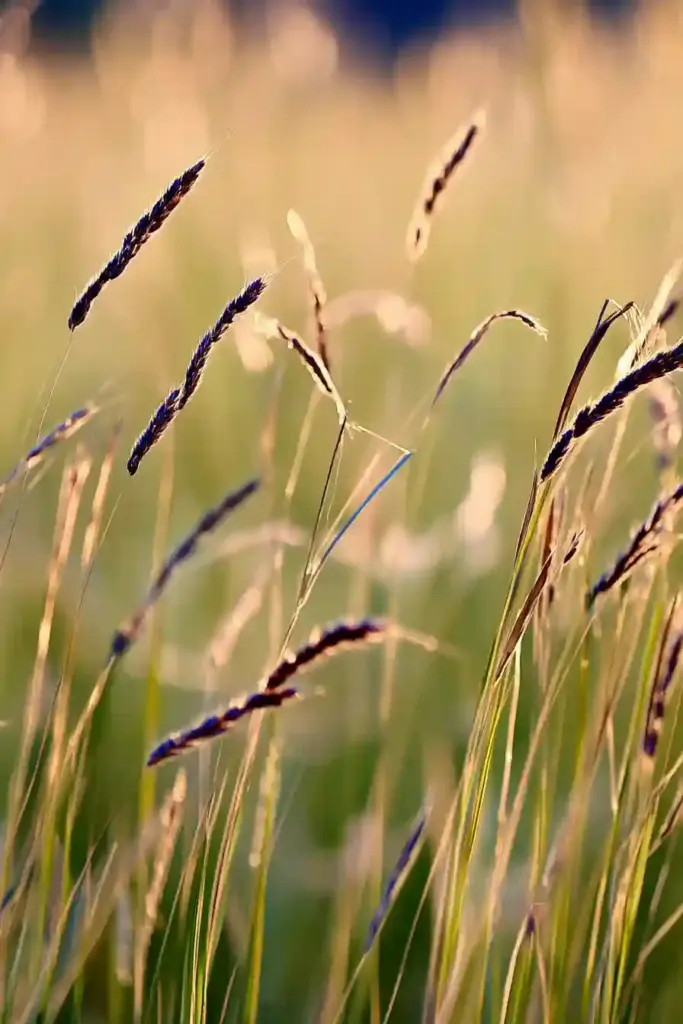
A native North American prairie grass, blue grama is perfect for dry landscapes. Its signature “eyelash” seed heads and blue-green foliage add visual interest. It requires little maintenance and is an excellent lawn alternative in drought-prone areas.
3. Fountain Grass (Pennisetum setaceum)
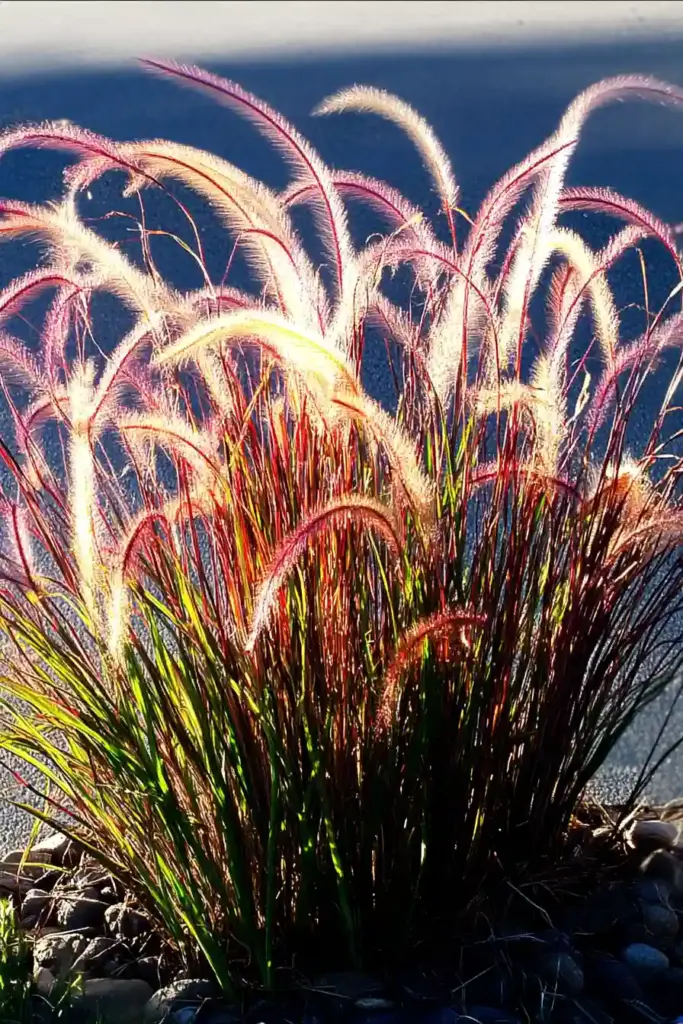
Fountain grass features arching, bottlebrush-like flower spikes and lush, cascading leaves. It comes in green or burgundy varieties and flourishes in hot, dry conditions. Use it to soften pathways or add drama to mixed borders. Once established, it requires very little water.
🌿 Drought-Tolerant Vines
Vines are perfect for vertical interest in small spaces, fences, pergolas, and trellises. While many climbing plants need frequent watering, these drought-tolerant varieties are surprisingly tough and add bold blooms or lush greenery with very little fuss.
1. Trumpet Vine (Campsis radicans)
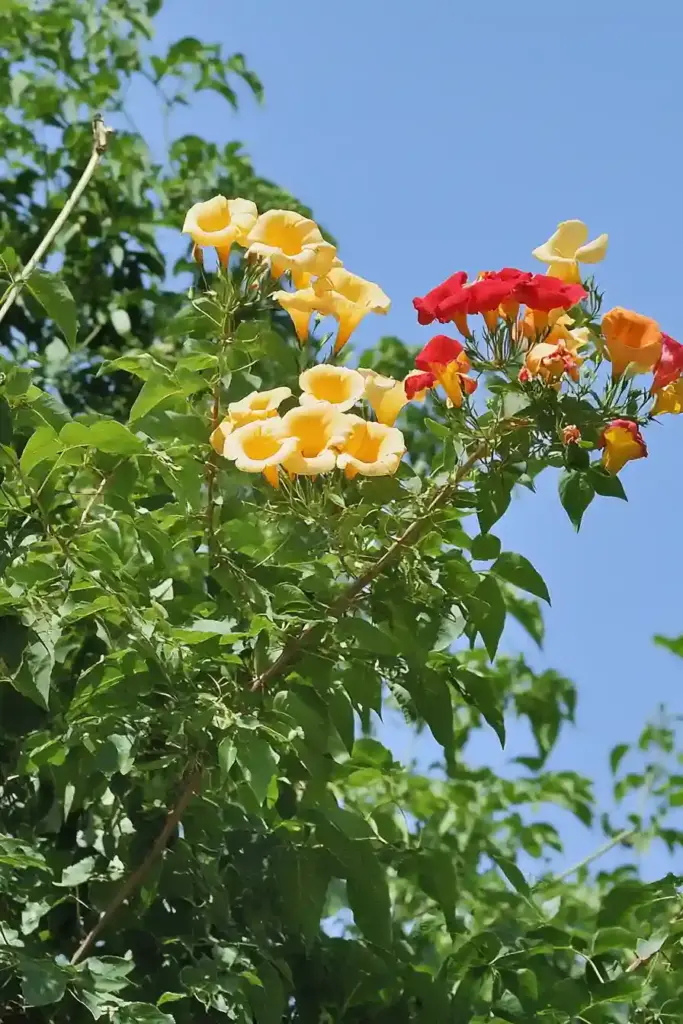
This vigorous climber boasts large, trumpet-shaped flowers in fiery hues of red, orange, and pink. It thrives in hot, dry climates and is beloved by hummingbirds. Once established, trumpet vine needs minimal water—but keep it in check, as it can spread aggressively.
2. Clematis (Clematis spp.)

Clematis is often thought of as delicate, but many varieties handle dry conditions remarkably well. With its oversized, bell-shaped blooms in purple, blue, or white, it adds instant charm to garden structures. Plant the roots in cool, shaded soil and let the vines reach for the sun.
3. Morning Glory (Ipomoea spp.)

Morning glories offer a fast-growing, colorful solution for dry spots. Their trumpet-shaped flowers open each morning in shades of blue, purple, pink, or white. They thrive in lean, well-drained soil and need very little water once established.
🌳 Drought-Tolerant Shrubs
Shrubs serve as the backbone of a landscape—and when they’re drought-tolerant, they bring beauty without the burden of constant watering. These tough varieties offer blooms, foliage interest, and even pollinator appeal, all while thriving in hot, dry conditions.
1. Russian Sage (Perovskia atriplicifolia)
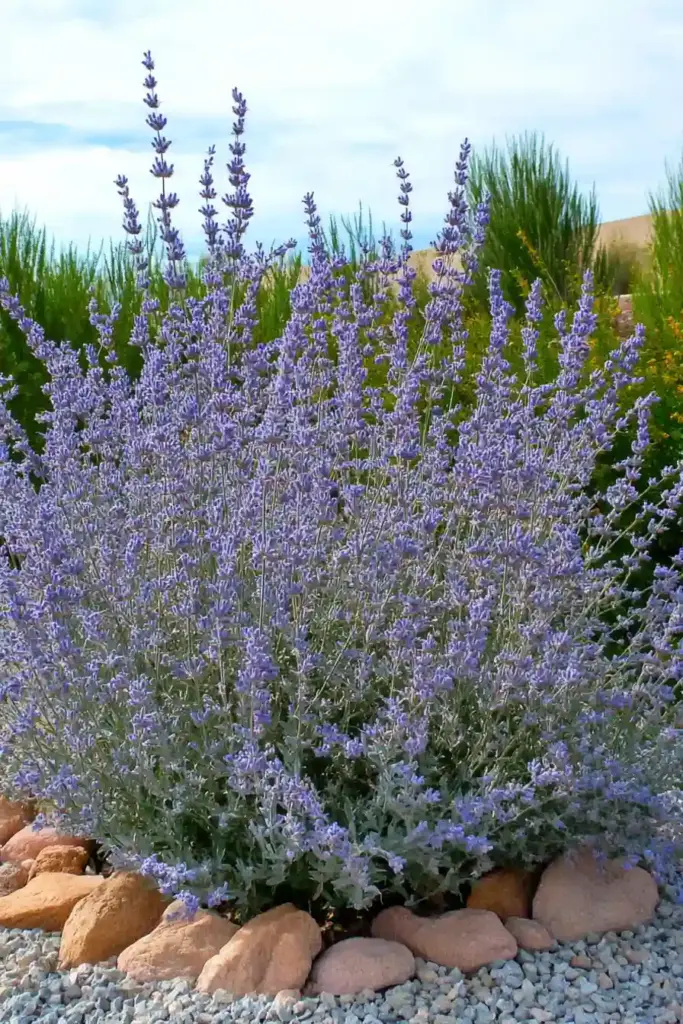
Russian sage is a drought garden essential. With tall, silvery stems and clouds of lavender-blue flowers, it adds height, color, and fragrance. It thrives in full sun and poor soil, requiring almost no water once rooted. Plus, it’s deer-resistant and pollinator-friendly.
2. Lantana (Lantana camara)
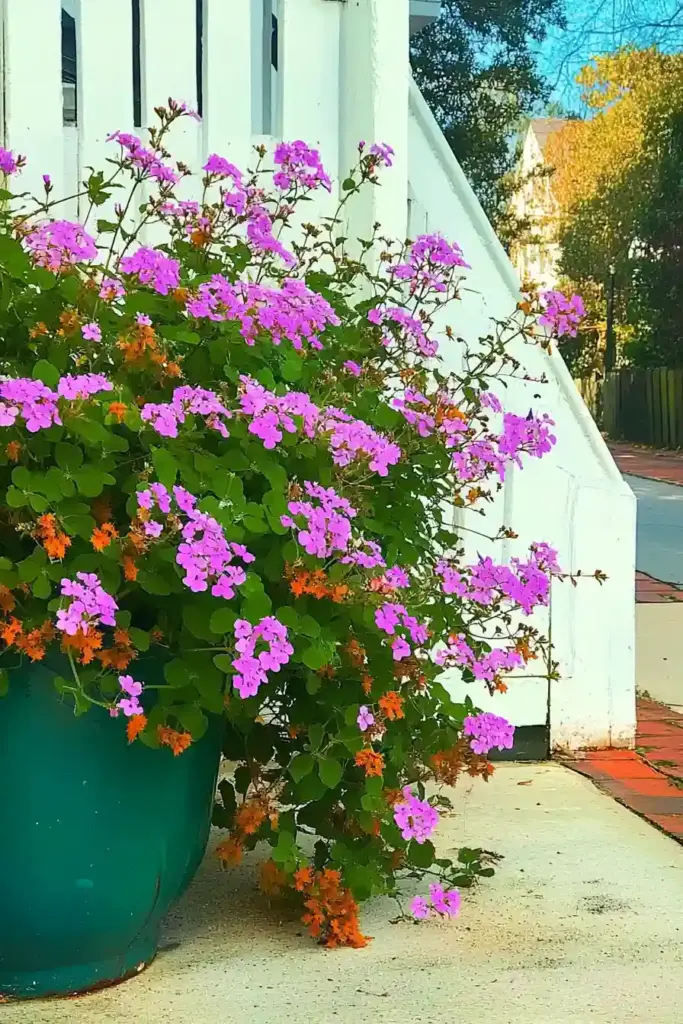
Lantana is a sun-loving shrub with clusters of multicolored blooms in shades of yellow, pink, orange, and red. Native to tropical climates, it performs beautifully in dry conditions and attracts butterflies and hummingbirds. Great for borders or containers.
3. Texas Sage (Leucophyllum frutescens)
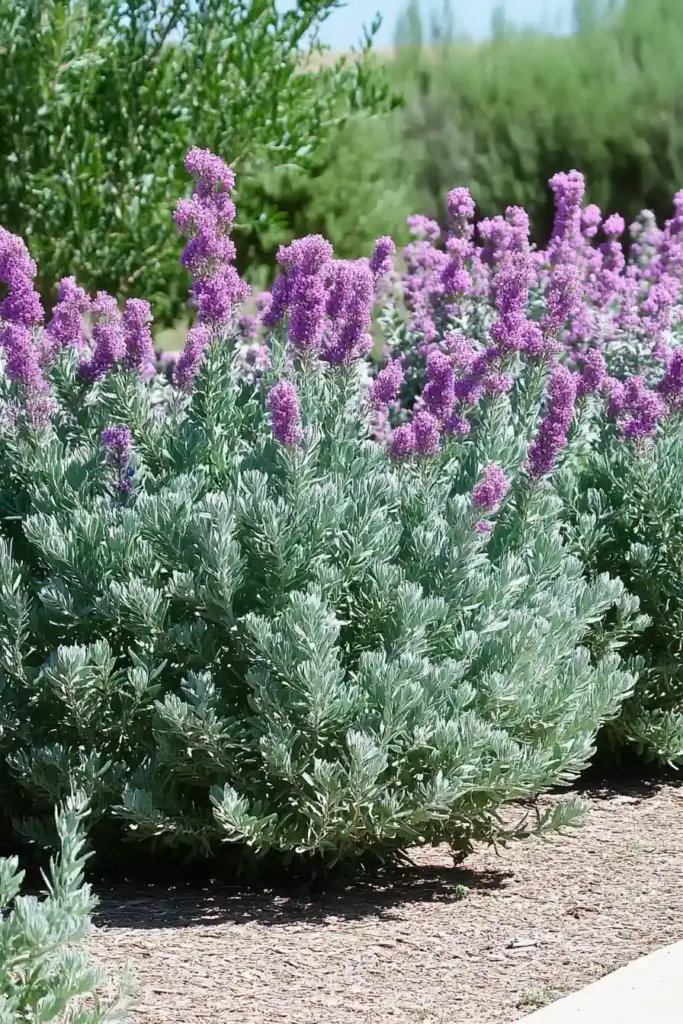
Texas sage is a hardy evergreen shrub with silvery foliage and stunning lavender blooms. It’s native to the Southwestern U.S., making it perfectly adapted to drought. It needs little maintenance and makes an excellent hedge or foundation plant in xeriscaped gardens.
💧 Smart Watering Tips for Drought Conditions
Even drought-tolerant plants need a little help now and then—especially during extended dry spells or while they’re getting established. These water-wise practices can help you maintain a healthy garden while conserving one of our most precious resources.
✅ Group by Water Needs
Design your garden in zones, grouping plants with similar water requirements together. This reduces waste and simplifies irrigation planning.
✅ Water Deeply, Not Frequently
Shallow, frequent watering encourages weak roots. Instead, water deeply and infrequently to train plants to develop strong, deep root systems.
✅ Mulch for Moisture Retention
Add a layer of organic mulch—like bark, straw, or compost—around your plants. This helps reduce evaporation, keeps roots cool, and suppresses weeds.
✅ Check Soil Before Watering
Use your finger or a moisture meter to check the soil before watering. If it’s still moist a few inches down, skip the watering.
✅ Water in the Early Morning
Watering early in the day reduces evaporation and gives plants a chance to absorb moisture before the heat kicks in.
✅ Install Drip Irrigation
Drip systems or soaker hoses deliver water slowly and directly to the roots, minimizing runoff and water loss through evaporation.
✅ Collect and Reuse Rainwater
Set up rain barrels or install a rainwater harvesting system to collect runoff from your roof. This eco-friendly practice can reduce your reliance on municipal water.
🌱 Final Thoughts
Designing a garden that thrives under dry conditions doesn’t mean sacrificing beauty or variety. With these 31 drought-tolerant plants, you can build a lush, colorful, and low-maintenance landscape that flourishes—even when the rain doesn’t come.
From hardy perennials and vibrant annuals to architectural succulents and ornamental grasses, there’s a plant for every spot in your garden. Pair them with smart watering practices and a thoughtful layout, and you’ll enjoy a thriving outdoor space that’s both eco-friendly and stunning.
Your garden can be water-wise and wonderful. All it takes is the right plants—and a little planning.
🌿 Love gardening inspiration? Follow me on Pinterest for bold plant ideas, tips, and seasonal color!
More Posts
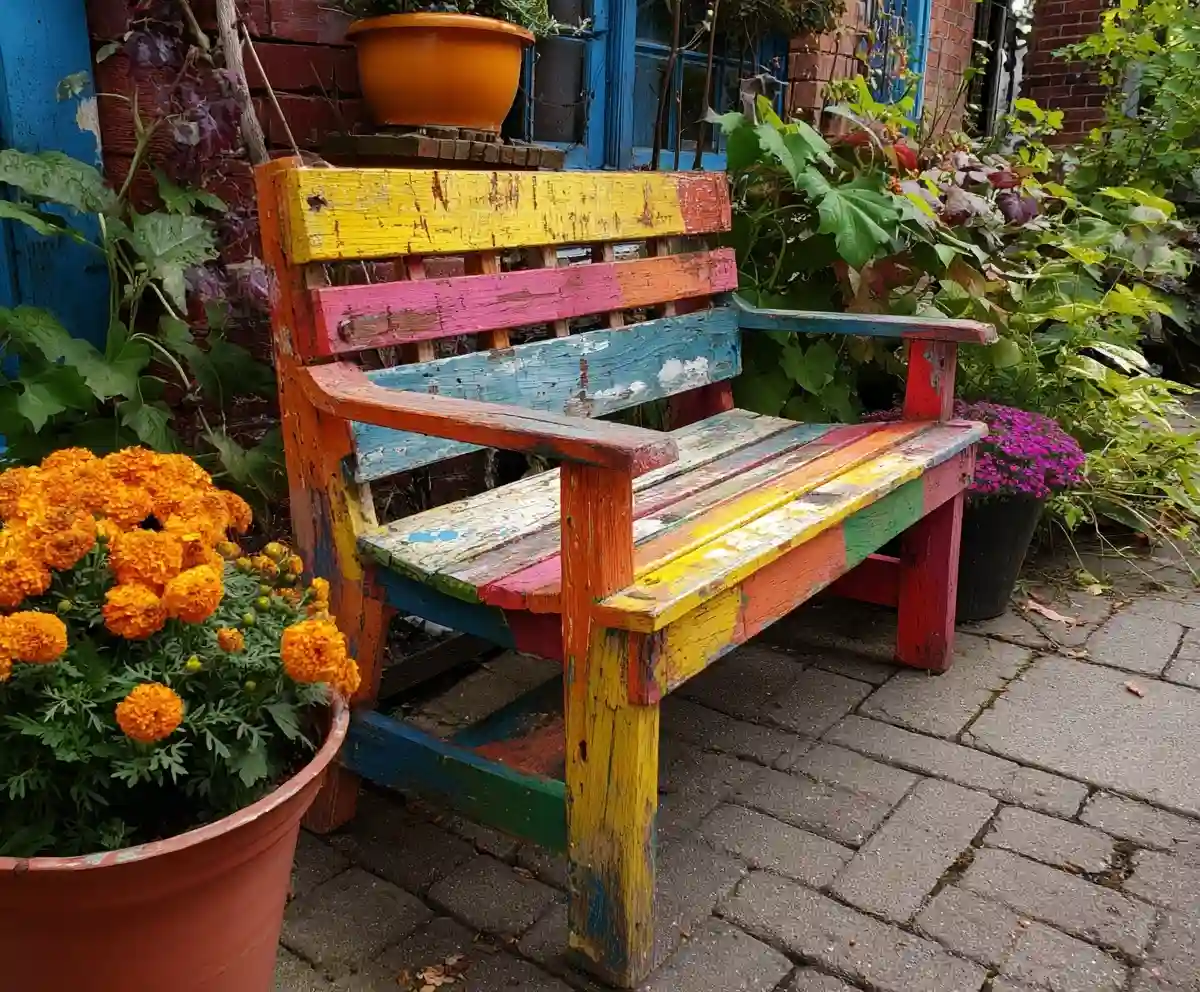
19+ Budget-Friendly Backyard Makeover Ideas
Backyard makeover ideas can turn even the most ordinary outdoor space into a warm, inviting retreat—without draining your wallet.
Read More →
21 Stunning & Simple DIY Clematis Trellis Designs
DIY clematis trellis designs are a beautiful way to blend creativity with function in your garden.
Read More →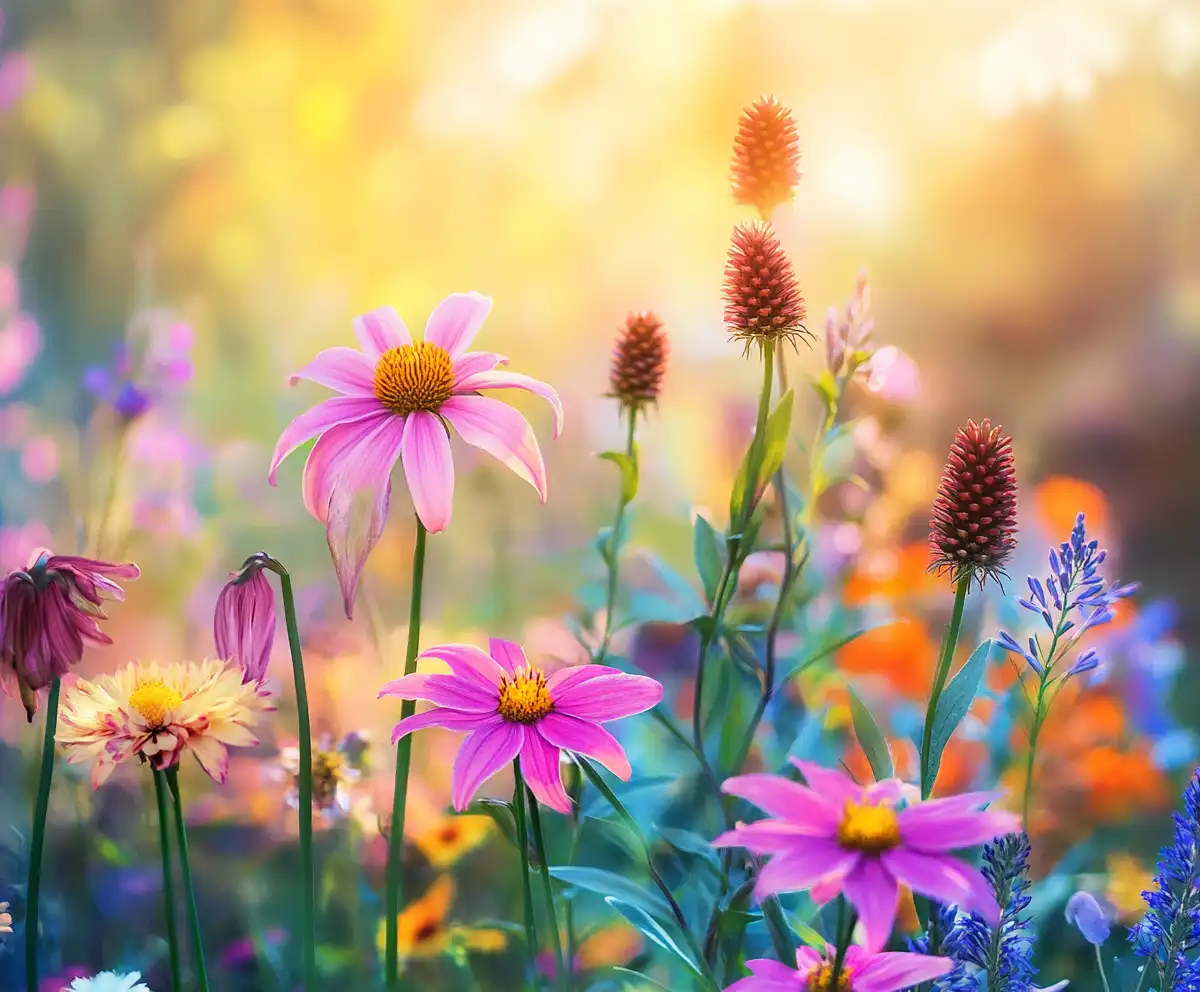
12 Full Sun Perennials That Bloom All Summer
Explore a selection of hardy perennials that flourish and bloom beautifully in full sun throughout the summer.
Read More →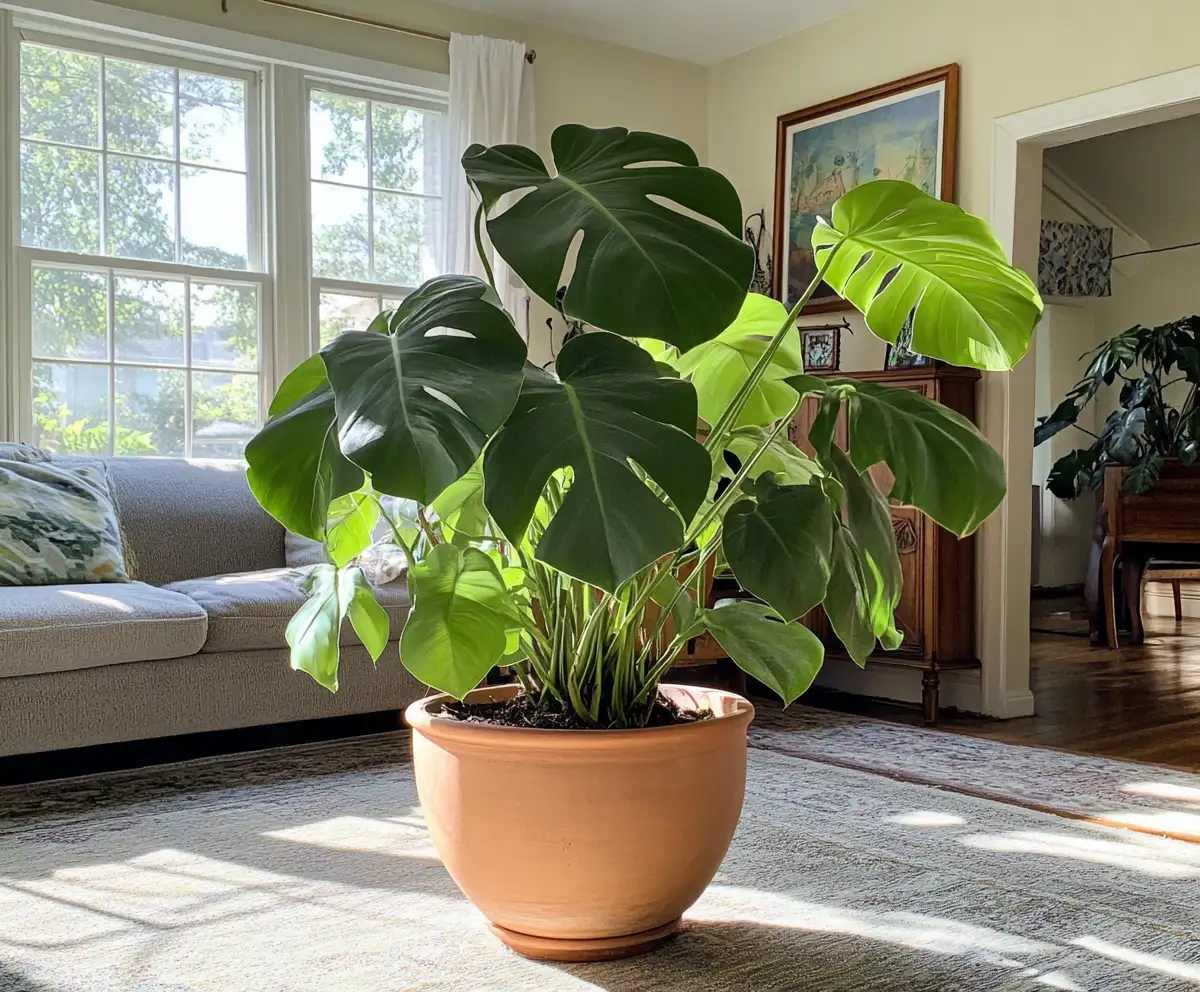
Houseplants for Living Room
Find the perfect houseplants to brighten and purify your living room while adding a touch of nature indoors.
Read More →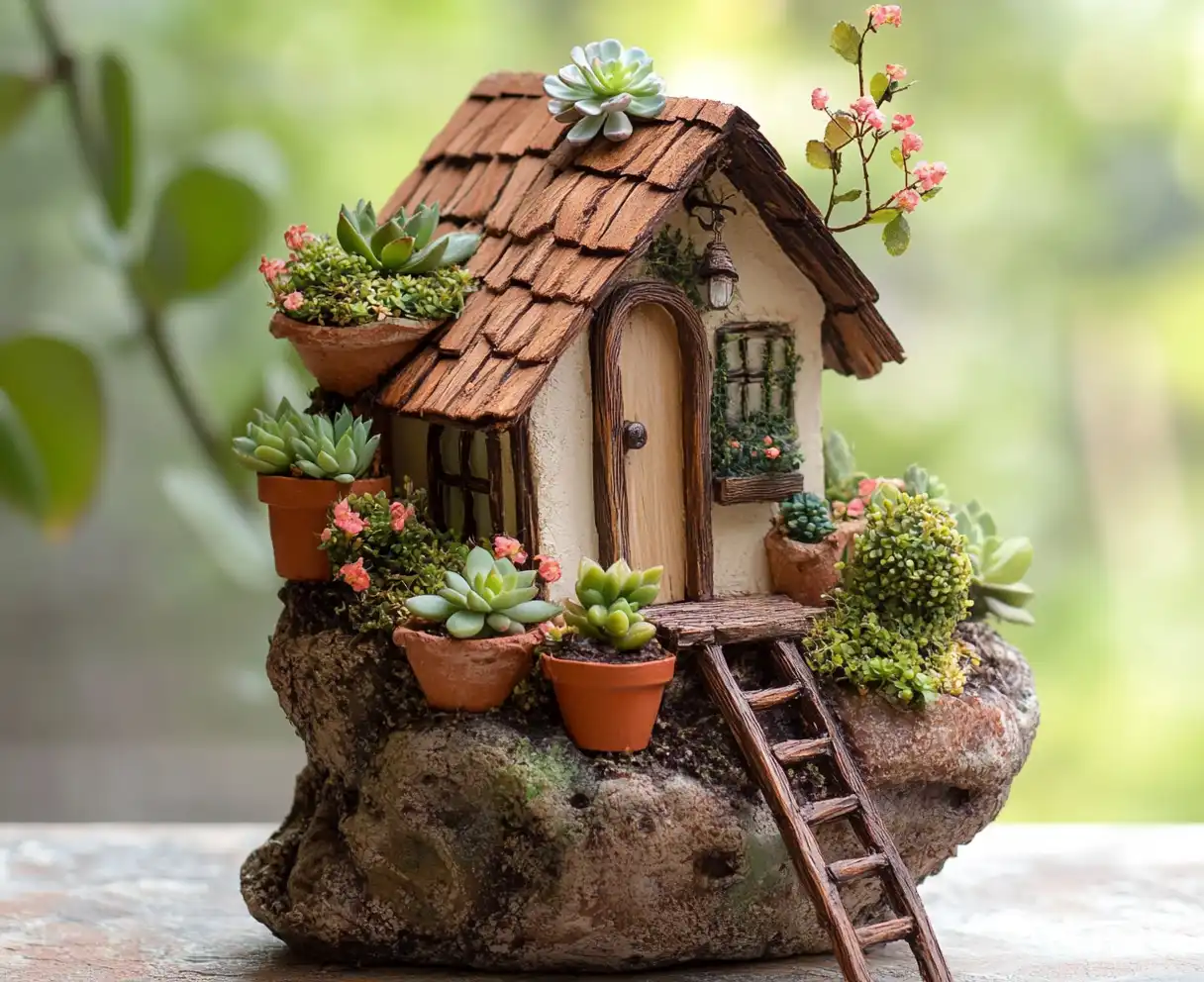
Backyard Play Area for Kids
Create a fun and safe backyard play area for kids with these inspiring design ideas and tips.
Read More →
Top Privacy Trees
Discover top tree varieties that provide natural privacy and enhance your outdoor space.
Read More →
